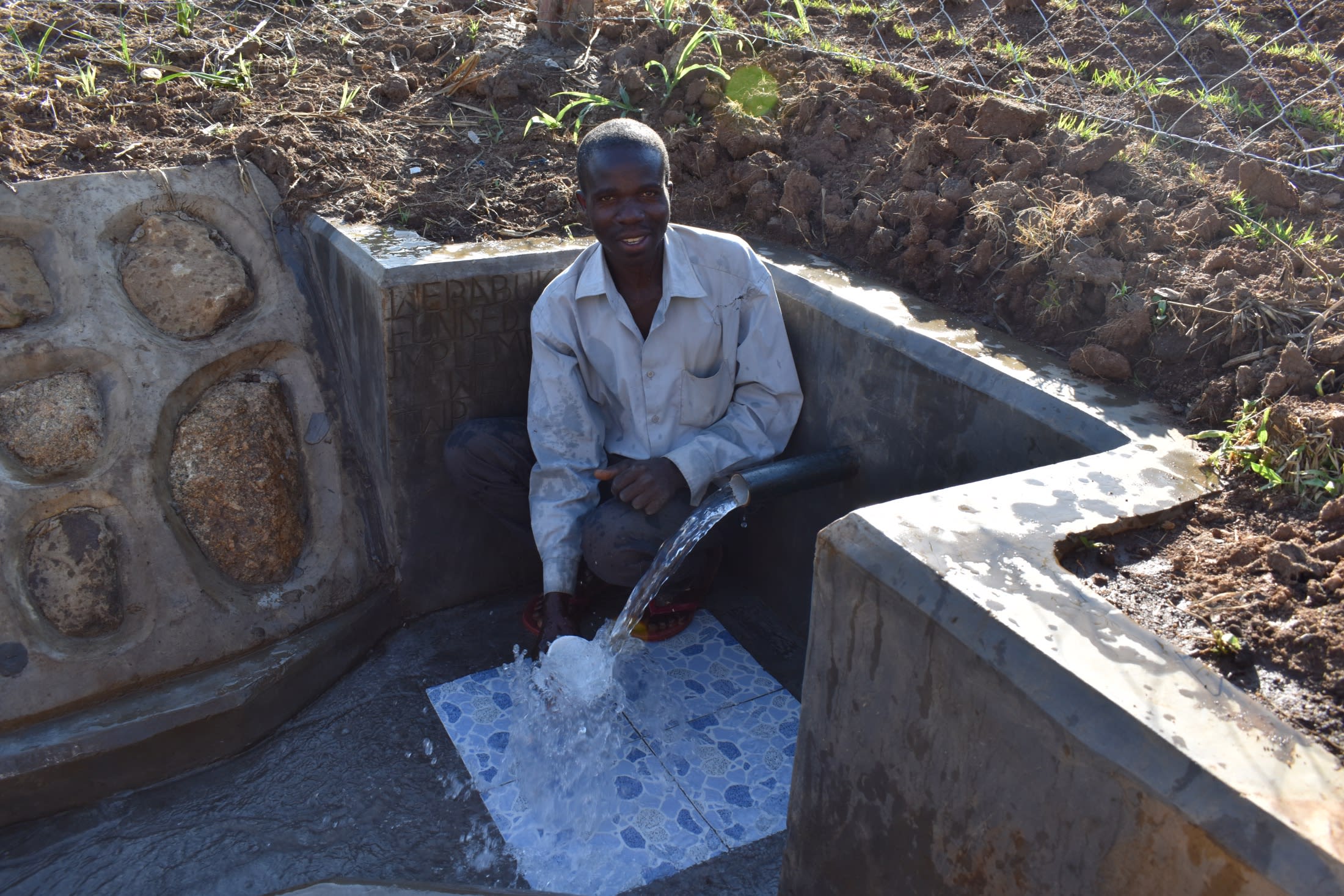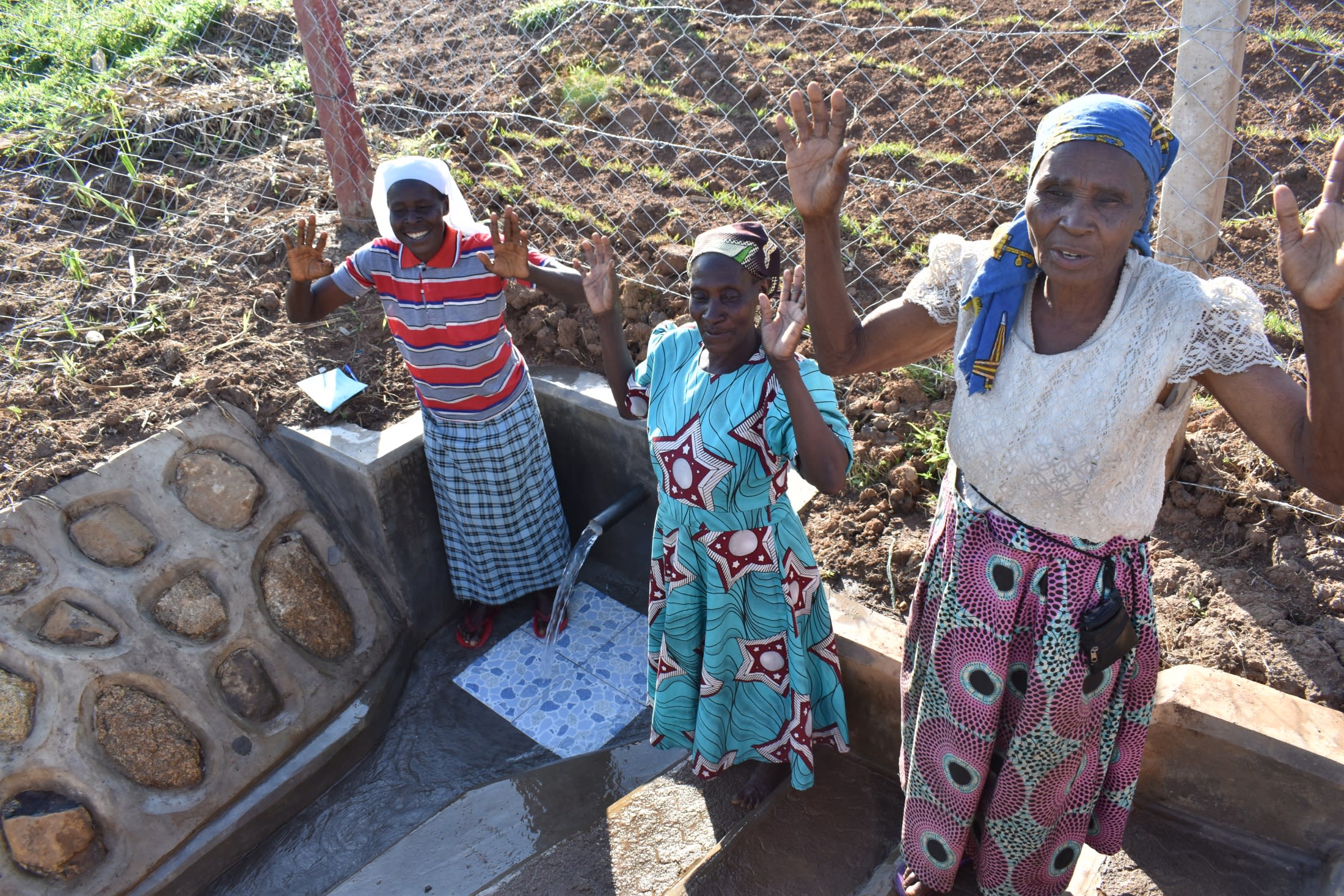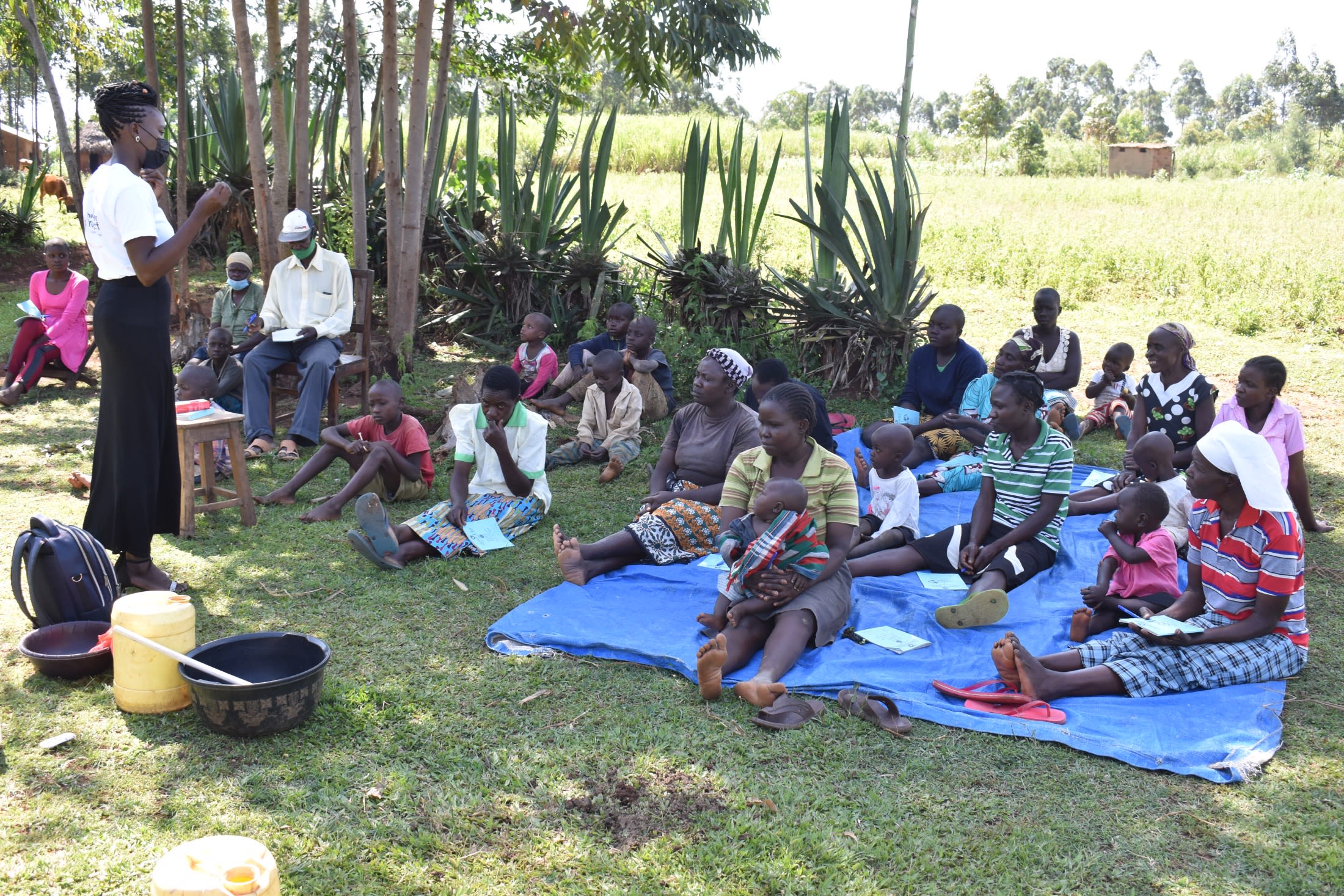Vegetated lands welcome you to Mukangu village as you endure the dust that rises from the dusty earth road leading to this community. Community members can be seen working on their farms as you walk through the village. People here grow crops and raise animals for their agricultural livelihoods. Small kiosks erected in some homesteads and along the road serve as miniature shops for this community.
There is a severe clean water shortage here, causing a ripple effect across the community to access what limited clean water sources exist. 300 people in Mukangu are closest to unprotected Werabukaya Spring, where they go to fetch water for all of their daily needs. Farther away from these families, however, there is a protected spring in the village that gets overcrowded.
Community members said many people from neighboring villages come to the protected spring first, very early in the morning, causing others to use Werabukaya Spring instead. But the community members who usually use Werabukaya Spring have no other spring to turn to, so they face the burden of overcrowding and long wait times. Sometimes, this leads to conflicts among frustrated community members who all need water at the same time.
"I end up drawing water from the unprotected spring during this dry season since I can't endure lining up at the protected spring. This water has so many side effects to our bodies, but we endure," said Luka Sindani, a young farmer.
"I fear scrambling for water at the protected spring because sometimes it results in fights amongst us children. I'd rather use water from this unprotected spring, yet it's not safe for consumption," explained primary school student Salome.
Fetching water from the unprotected spring further slows people down. To access the water in its small and shallow pool, people have to use small bowls and jugs to scoop water to pour into their larger jerrycans. This process is tiresome and time-consuming, but if people move too quickly, they risk stirring up mud and sand into the water. Then, everyone would have to wait for the water to settle before fetching could begin again.
The other major concern at the spring is its contaminated water unfit for consumption. Because the spring is currently open to the environment, both human and animal activity pollute the water. Inside the water, algae, bugs, and rotting plant material are constant. When it rains, the runoff carries more dirt, farm chemicals, and animal waste into the water. Animals can access the spring and drinking from and walking directly in the pool of water where community members have to fetch it.
Community members say waterborne diseases are common among the families depending on this spring, particularly typhoid and cholera. These diseases are not only expensive to treat, but they rob children and adults alike of their health and ability to participate in productive activities, whether school or work.
What We Can Do:
Spring Protection
Protecting the spring will help provide access to cleaner and safer water and reduce the time people have to spend to fetch it. Construction will keep surface runoff and other contaminants out of the water. With the community’s high involvement in the process, there should be a good sense of responsibility and ownership for the new clean water source.
Fetching water is a task predominantly carried out by women and young girls. Therefore, protecting the spring and offering training and support will help empower the female members of the community by freeing up more of their time and energy to engage and invest in income-generating activities and their education.
Training on Health, Hygiene, COVID-19, and More
To hold training during the pandemic, we work closely with both community leaders and the local government to approve small groups to attend training. We ask community leaders to invite a select yet representative group of people to attend training which will then act as ambassadors to the rest of the community to share what they learn. We also communicate our expectations of physical distancing and wearing masks for all who choose to attend.
The training will focus on improved hygiene, health, and sanitation habits in this community. We will also have a dedicated session on COVID-19 symptoms, transmission routes, and prevention best practices.
With the community’s input, we will identify key leverage points to alter their practices at the personal, household, and community levels to affect change. This training will help ensure participants have the knowledge they need about healthy practices and their importance to make the most of their water points as soon as the water is flowing.
Our team of facilitators will use a variety of methods to train community members. Some of these methods include participatory hygiene and sanitation transformation, asset-based community development, group discussions, handouts, and demonstrations at the spring.
One of the most important issues we plan to cover is handling, storing, and treating water. Having a clean water source will be extremely helpful, but it is useless if water gets contaminated by the time it is consumed. The community and we strongly believe that all of these components will work together to improve living standards here, which will help to unlock the potential for these community members to live better, healthier lives.
We will then conduct a small series of follow-up training before transitioning to our regularly scheduled support visits throughout the year.
Training will result in the formation of a water user committee, elected by their peers, that will oversee the spring's operations and maintenance. The committee will enforce proper behavior around the spring and delegate tasks that will help preserve the site, such as building a fence and digging proper drainage channels. The fence will keep out destructive animals and unwanted waste, and the drainage will keep the area’s mosquito population at a minimum.

 Protected Spring
Protected Spring
 Rehabilitation Project
Rehabilitation Project





































